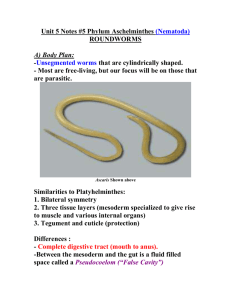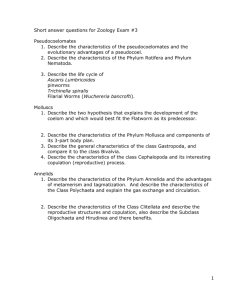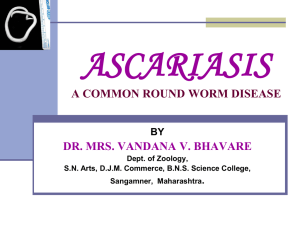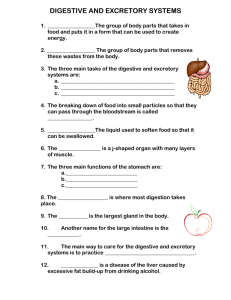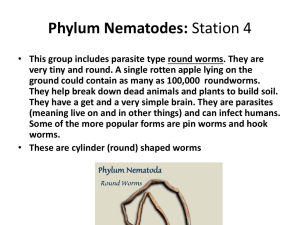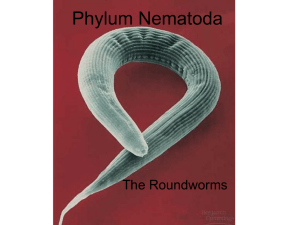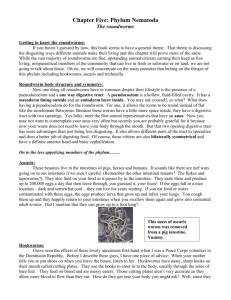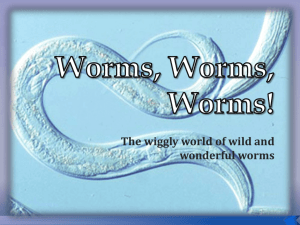Phylum Aschelminthes Learning Outcomes
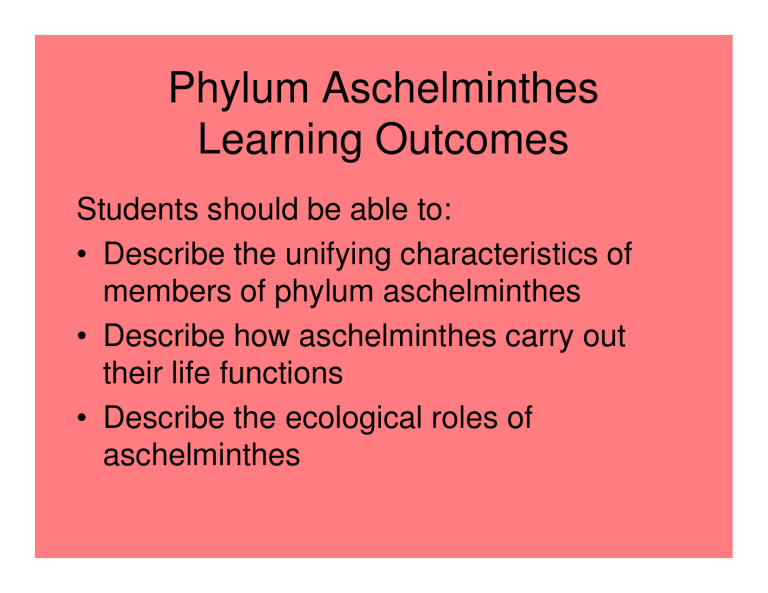
Phylum Aschelminthes
Learning Outcomes
Students should be able to:
• Describe the unifying characteristics of
• Describe how aschelminthes carry out their life functions
• Describe the ecological roles of aschelminthes
Phylum Aschelminthes also called Nematoda
Round worms
Examples: cavity worms, sac worms,
Ascaris, nematodes, & rotifers
Habitat
• Free-living on land, marine and fresh water
• Parasites on plants, animals, and humans
General Characteristics
(same as platyhelminthes)
• Bilateral symmetry
• 3 cell layers (ectoderm, mesoderm,
• Organ level of organization
• Exhibit cephalization
General Characteristics unique to Aschelminthes
• Have a complete oneway digestive system with a mouth and an anus
• Have a ‘tube within a tube’ arrangement called a pseudocoelom
Pseudocoelom
• Body cavity between the intestine and the body wall
• Contains fluid which creates hydrostatic
• When muscles in the body wall contract the pseudocoelom gets smaller and no pressure is applied to the intestine
Pseudocoelom (2)
• Contains the reproductive organs (where sperm and egg are produced)
• Stores wastes oxygen to the tissues (acts as circulatory & respiratory systems)
Excretory System
• Nitrogenous wastes are enter the 2 excretory tubules
• Excretory tubules empty into an excretory worm
Digestive System
• Ingestion: food enters the mouth through the pharynx
• Digestion: food is passed into the intestine absorbed
• Elimination: undigested food wastes leave through the anus
Eggs eliminated in feces
Ascaris Life Cycle
Eggs in food or H
2
O enter the host
Eggs hatch in the intestine
Larvae mature and male and female mate (eggs fertilized)
Larvae are coughed out of the lungs into the throat and swallowed into the stomach
Larvae enter blood vessels and move to lungs
